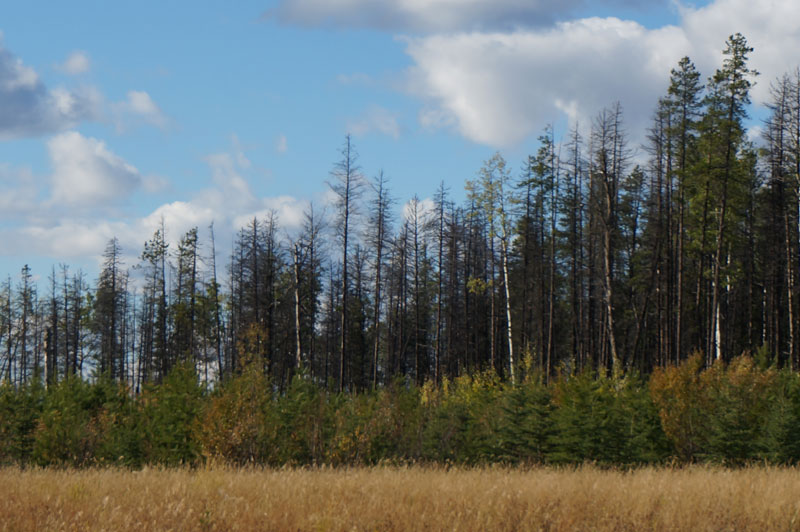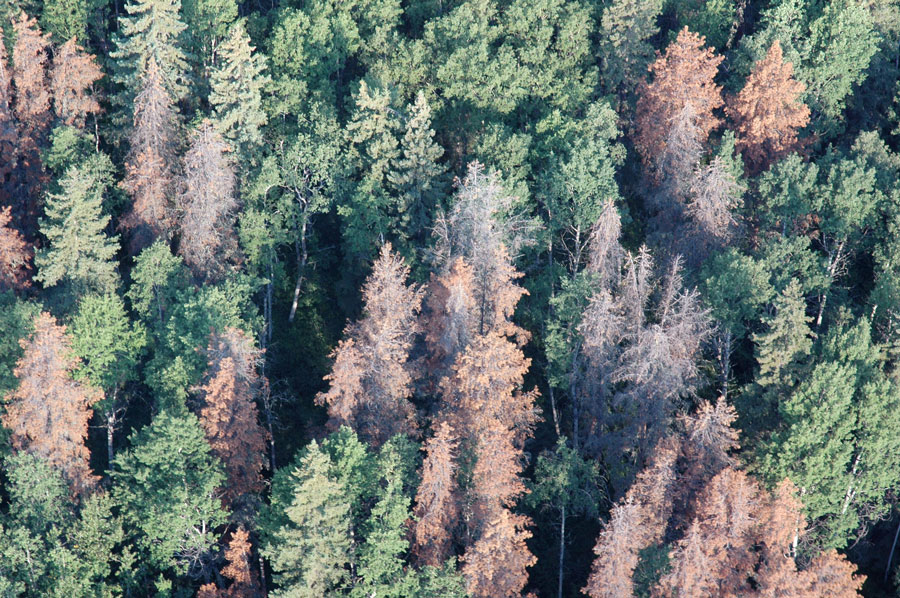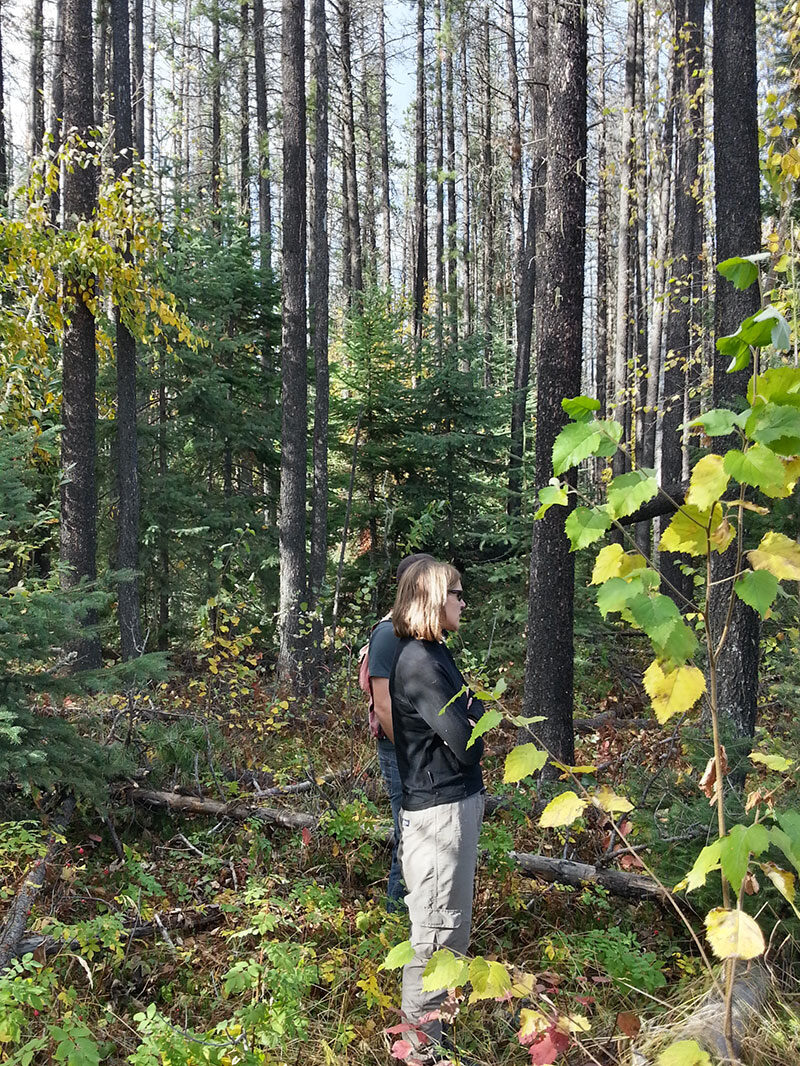
Establishment of PSP Network to Monitor Stand Dynamics and Establish Yield Curves for Stands Killed by MPB
As a result of significant in-flights of mountain pine beetles coming from British Columbia in 2006 and 2009, as well as subsequent local production, there are widely distributed pine dominated stands throughout Alberta that have been significantly affected by MPB-caused mortality. Mortality is most prevalent from West-Central Alberta, in the Grande Prairie are and northwest of Manning.
While there is a substantial network government and industrial PSPs throughout the province, the number of plots in pine dominant stands with significant mortality is limited. As a result, there is limited information available to analyze and make statistically sound conclusions regarding the effects of MPB on stand dynamics, the likely regeneration outcomes in pine dominated stands killed by MPB, or projected growth trajectories of these stands.
The objectives of this project are:
- To create a permanent sample plot network in pine dominated stands (>50% of stand) with existing high rates of MPB-caused mortality (>20% of total basal area) that have not had any post-MPB attack treatment. This will provide statistically sound data regarding stand dynamics, regeneration recruitment, and growth rates across a range of natural sub-regions and ecosites at varying rates of mortality. The plots will be measured at 5-year intervals to capture the dynamic change in killed stands.
- To provide predictive ability for assessing recovery rates for ecosystem function through analysis of the plot data through time. This is critical for prioritizing stands for rehabilitation.
Field crews are in the process of establishing new PSPs in attacked stands and measuring existing PSPs that have been attacked. The goal is to have 160 plots in stand heavily impacted by MPB attack throughout the Central Mixedwood, Dry Mixedwood, Lower Boreal Highlands, Upper Boreal Highlands, Upper Foothills, and Lower Foothills natural subregions.










